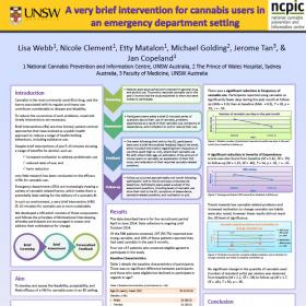Abstract
Cannabis use in Australia remains considerably high (10.9%), and is most prevalent among young adults aged 18 to 29 years (21.3% reported past year use in 2010). Research has indicated that approximately 10% of those who try cannabis will become dependent on the drug. There is also a growing body of evidence of additional harms of cannabis use, including impaired cognitive functioning, injury, chronic respiratory and cardiovascular problems, and poor mental health. Cannabis users infrequently access health services in relation to their cannabis use, and when they do they have often been smoking regularly for 10 years or more. Consequently, a method of secondary intervention alerting people to longer-term problems of their cannabis use is necessary. Brief interventions (BI), defined as time-limited, patient-centred approaches focusing on changing behaviour, have evolved as a public health approach to reduce a range of health-limiting behaviours, including substance use. Despite a range of benefits seen for alcohol and tobacco, very little research has been conducted on the efficacy of BIs for cannabis use. Here we present a pilot study of a BI (5-10 minutes) delivered opportunistically to cannabis users (n=70) presenting to a hospital emergency department. The BI consists of three components: screening, assessment, and brief personalised feedback delivered by a trained researcher within the emergency department setting at Prince of Wales Hospital. Follow-up data will be collected one-month following presentation to the ED. It is hypothesised that this procedure will lead to increased motivation among participants to address their cannabis use, as well as actual reductions in cannabis use and related harms (data on first 10 participants will be presented). Establishing the efficacy of such BIs has implications for those at-risk of developing cannabis dependence, by bridging the gap between primary prevention activities and more intensive treatment for those diagnosed with cannabis dependence.


